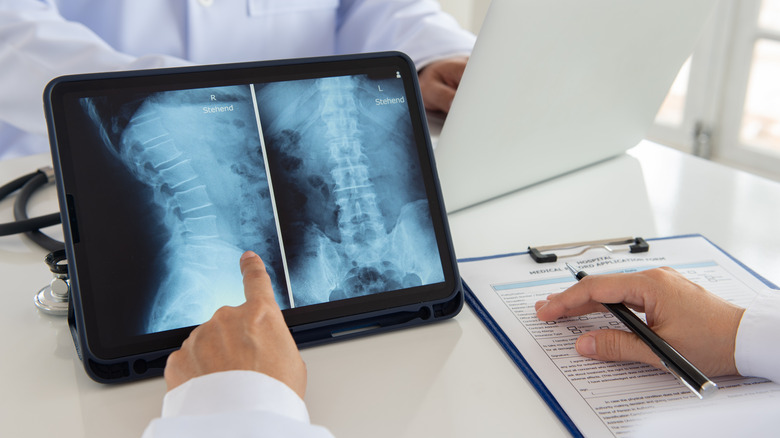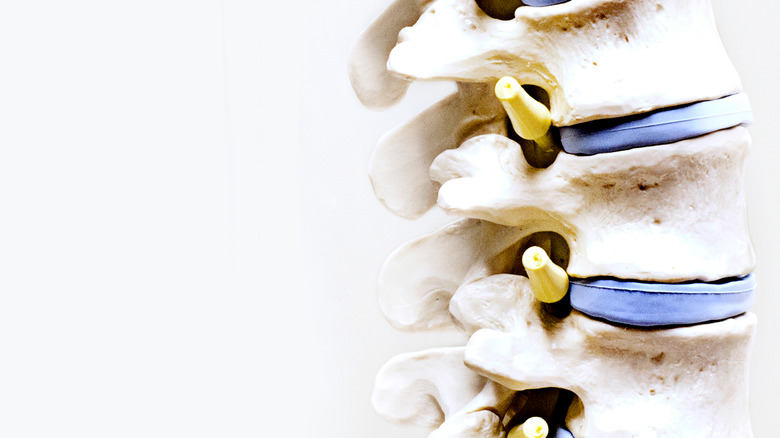When Is Back Surgery The Best Solution?
Whether it's a persistent dull ache or a sudden stabbing pain, backaches can interfere with your daily routine and decrease your quality of life. Backaches are common at every age, but they're typically easier to treat in those who haven't yet reached their 60s (via Mayo Clinic). While back pain is often localized to one region, at times it may reach down to your legs or the symptoms might get worse when you do activities such as walking, bending, or twisting.
There are several common causes of back pain; sometimes, it may occur as a result of structural faults such as ruptured discs, osteoporosis, sciatica, or arthritis (per Medical News Today). Other times, back pain may occur when you take an incorrect position while sleeping, bending, or carrying heavy weight, which may cause muscle strain. Per the National Health Service (NHS), back pain usually disappears on its own in a few weeks. However, if it persists, it could be because of a chronic condition and may require examination by a health specialist. They may either prescribe stronger pain medications or suggest back surgery.
When is back surgery the best option?
Back surgeries are often the best option if there are certain structural injuries or deformities that cannot be treated using other therapies or medication. According to Mayo Clinic, a laminectomy is one such back surgery that helps create space in the spine by removing a back piece of the spinal vertebrae called the lamina. This treatment can help ease numbness and pain radiating down the legs due to bone spurs. In the case of bone spurs, an alternative back surgery called an interlaminar implant can be performed, inserting a U-shaped part in between two vertebrae to create a space between them, explains WebMD. This helps release pressure and ease back pain symptoms without losing as much spinal stability as a laminectomy.
If you have certain spinal conditions causing intense back pain such as spinal stenosis, degenerative disk disease, or spinal tumors, your doctor might recommend a surgery called spinal fusion (via WebMD). As the name suggests, spinal fusion fuses two or more vertebrae together into one. But once fused, these vertebrae lose their former flexibility. One alternative to spinal fusion for some patients is a disk replacement procedure. Per John Hopkins Medicine, this surgery involves removing a damaged disk in the spine and replacing it with an artificial disk made of metal and plastic. It's a good option for those who are not overweight, don't have significant nerve compression, or have spinal pain in only one or two disks.


